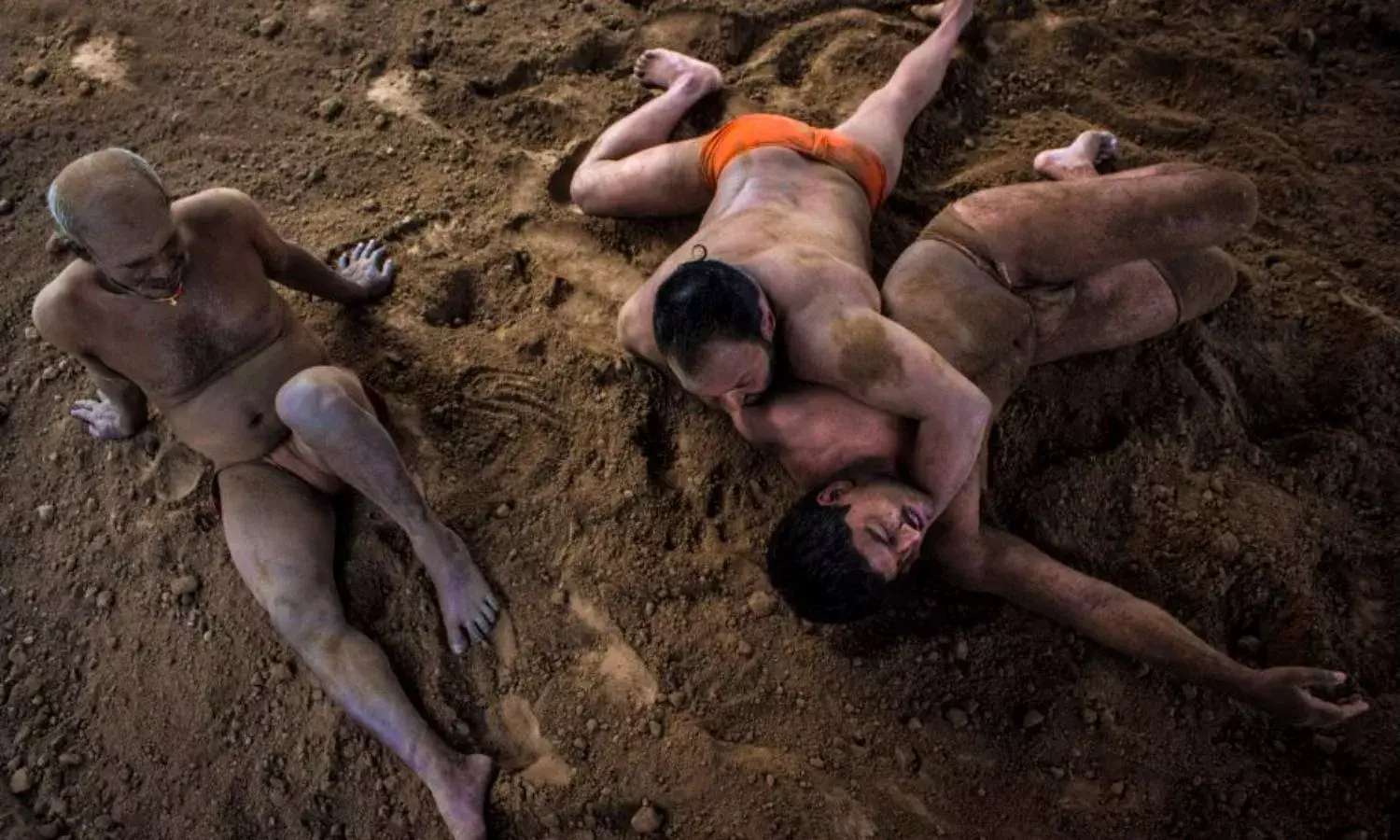In Pictures: Kushti, A Traditional Indian Form of Wrestling
One of the oldest akhadas in the city

CALCUTTA: Most countries of the world have a traditional style of wrestling. In many parts of India, wrestling takes place in a clay or dirt pit. The soil is mixed with ghee and other oils and is tended before each practice session.
The ancient sport of kushti held great importance in Indian societies of the past, but at present kushti is practised only in pockets of the country. Even in these places the future of the sport is uncertain.
Calcutta the City of Joy has its own akhada, a place where wrestling is practised. The akhada is situated in Mullick Ghat beside the Howrah Bridge.
Here the wrestlers or pehelwans begin their day at 4.30am with a prayer to Hanuman (Bajrang Bali) followed by a series of physical exercises: the mace (gada), weights, ropes, bars and aerobics.
Nandu is the first to perform the mace exercise. Swinging a 30 kilogram wooden gada, mace wrestlers must pass the ultimate test of endurance. A strict regimen of 500 push-ups and 500 sit-ups is followed by hours of practice in the soil pit.
The various techniques of close combat kushti, such as dhak, nikas, dhobi pachad and kanpheri, are specially designed to defeat the opponent in freehand combat.
Jwala Tewary is a man of positive vibes who lives and breathes his love and commitment for his sport. Tewary is the head of this akhada.
He started his journey in the year 1961, and is a national-level wrestler. He teaches kushti to girls as well and all of them have won national tournaments.
Previously the akhada was situated in Dhakapatti on Kalakar Street. It is one of the oldest akhadas in the city.
“I am 57 years old and have been in this sport for the last 45 years. My father, my uncle they were all wrestlers.”
“I will continue this practice till my last breath and will keep giving lessons to the younger generation.”



